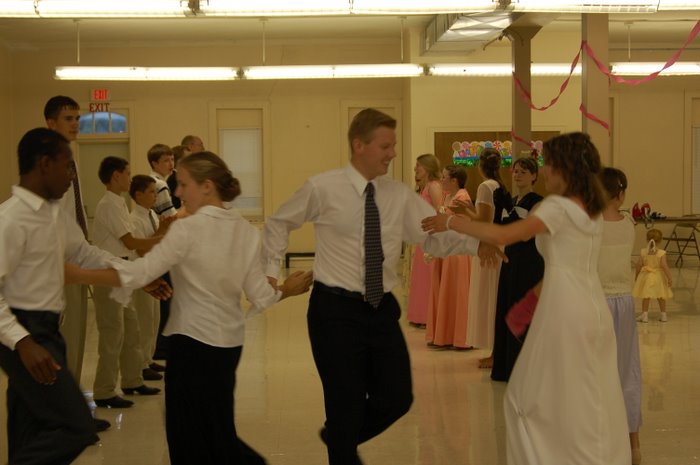- The gentleman should ask the lady to dance.
- A lady who is seated indicates that she does not wish to dance
- A lady need not give a reason for declining to dance with a gentleman, but she should not accept another gentleman on the same dance.
- After a dance, the gentleman will lead his partner from the dance floor, and both will thank the other for the dance.
- Dancing with another person is a privilege, and at our balls it is not an indication of personal affection-- rather, we are honoring God together and rejoicing in His gifts of dance and fellowship.
"Even in private balls, no gentleman can invite a lady to dance without a previous introduction." Hm. This would save you the embarrassment of trying to get a guy to tell you his name without having to actually say, "what's your name?"
"No gentleman should accept an invitation to a ball if he does not dance. When ladies are present who would be pleased to receive an invitation, those gentlemen who hold themselves aloof are guilty, not only of a negative, but a positive act of neglect." Reasonable enough.
"To attempt to dance without knowledge of dancing is not only to make one's self ridiculous, but one's partner also. No lady or gentleman has the right to place a partner in this absurd position." Since most people at our dances don't know how to dance I would amend this. "To attempt to dance without attentiveness to instruction is not only to make one's self ridiculous, etc."
"It is not necessary that a lady or gentleman should be acquainted with the steps, in order to walk gracefully through a quadrille. An easy carriage and a knowledge of the figure is all that is requisite." [emphasis in original] We don't even require that!
"No person who has not a good ear for time and tune need hope to dance well." Ouch.
"Good taste forbids that a lady and a gentleman should dance too frequently together at either a public or private ball. Engaged persons should be careful not to commit this solecism." Wow, okay.
"Young gentlemen are earnestly advised not to limit their conversation to the weather and the heat of the room. It is, to a certain extent, incumbent on them to do something more than dance when they invite a lady to join a quadrille. If it only be the news of the day, a gentleman should be able to offer at least three or four observations to his partner in the course of a long half-hour." So conversation is a gentleman's responsibility? Interesting. Of course, if you are dancing together for half an hour then conversation is a necessity not a nicety.
"Gentlemen who dance cannot be too careful not to injure the dresses of the ladies who do them the honor to stand up with them. The young men of the present day are singularly careless in this respect; and when they have torn a lady's delicate skirt, appear to think the mischief they have done scarcely worth the trouble of an apology." I've never had trouble with this one. The young men at our dances are apparently better in this respect. I have had a dress stepped on, but they always apologize profusely.
The etiquette books I read are mostly found here.
